Research can be so much more than a dry left-brained process. Those of us who attended university were not taught this crucial little bit of information. In fact, nobody at university ever really tells you how to research. They just give you an assignment, essay, paper or maybe even a thesis, then they tell you to go away and come up with something interesting for the professor. Postgraduate and professional academic scholars, of course, have to follow very specific protocols for their disciplines. This generally involves a specific method, and way of reporting results. Still, when it comes down to it, it’s all about finding sources and data, and then making sense of them.
When I was an undergraduate in the 1980’s, I was very much the typical unimaginative researcher. I did an Arts degree majoring in History and English, and quite frankly, I found it a struggle to stay interested. Sitting in the university library was torture, but I just bit my lip and did it like everyone else.
Some 13 years after I received my B/A, I went back to study for my doctorate. But by this time I had spent a decade developing my Integrated Intelligence (Integrated Intelligence is basically spiritual intuition). I had developed some rather advantageous cognitive skills by that time, and I set about formally incorporating them into my study sessions. The result was spectacular. My research came alive, and I was able to complete a 110 000 word thesis and publish half a dozen academic papers in less than four years of part-time enrollment (while working full-time as a school teacher). I got rave reviews from my examiners, and the thesis got published as a book, Integrated Intelligence.
I continue to use these methods today.
So, what exactly did I do that made all the difference? The answer can be found in a paper I wrote called “Integrated Inquiry”, for the Open information Science Journal. You can read that on mindfutures.com, if you like. Below, I am going to give you the short version.
Integrated Inquiry is the application of Integrated Intelligence during research. There are specific skills and cognitive processes involved. For those of you who are writers and researchers (and I know several 22C+ followers are), I can only encourage you to try out these methods yourself. You may be amazed at the difference they make to your projects.
The extract is longer than your typical blog post, but I think you will find it interesting. It includes several specific anecdotes from my research experience. One research tool I write about is “The Feeling Sense”. To get you started using Integrated Inquiry, you might like to employ that as you are reading here, and skim past sections that you feel are not important to you. The second key skill you can employ right now is to ask specific questions before you begin to read, as that will help activate Integrated Intelligence. More about that in the extract.
Marcus
The Five Tools
The five INI tools are The Intuitive Diary, Free-form Writing, Meditative States, The Feeling Sense, and Embracing Synchronicity. In this section I am going to describe them, then outline some specific applications using the core operations of INI.
The Intuitive Diary
This is a diary in which the researcher records his/her intuitive feelings, images, prompts, dreams, and so on. He/she can also record his/her interpretations of these sources of information. I suggest the researcher buy a good quality diary, as he/she may later want to be able to look back on what has been written (sometimes it makes more sense then). The Intuitive Diary helps to establish the connection between rational and intuitive cognitive processes in the brain. Writing down intuitions and intuitive experiences not only helps the researcher understand them better; it sends a message to the psyche that these “data” count.
Free-form Writing
Free-form Writing is stream-of-consciousness prose, written fluidly, quickly, and without immediate editing or too much conscious analytical thinking. It is essentially “effortless” writing.
I have used Free-form Writing extensively in all my writing, including my doctoral thesis. I adopted this idea from Joan Bolker’s (1998) Writing Your Dissertation in Fifteen Minutes a Day. Bolker’s book is about writing a thesis through four stages: the zero draft, first draft, second draft, and beyond. Bolker recommends writing from day one of the doctoral enrollment. She suggests writing at least fifteen minutes a day, no matter what.
The “zero draft” involves writing whatever comes to you, and without editing, proofreading, or censoring yourself. The writer simply transcribes whatever idea comes into his/her mind about the subject matter—connections, distinctions, hypotheses, questions, guesses, confusions, etc. After the zero draft phase, the researcher can begin to put together a first draft.
I adapted Bolker’s method to my understandings of integrated intelligence. When I began typing, I simply allowed myself to enter a fluid stream of consciousness, and let the words pour out. However, instead of writing for fifteen minutes, I set myself a goal of writing five hundred words a day, every day, first thing in the morning.
I found that the zero draft helped clarify thinking, as did Free-form Writing. As I wrote, ideas came together. Links between people, ideas, and historical and philosophical concepts suddenly began to make sense. I did not stop to check if the ideas were valid. I just kept writing. This is thinking as you write, not thinking before you write.
Before I began my daily writing session I began with a prayer or affirmation. It would often go something like this.
Spirit, lead me through this writing process, so that what that I am writing may be fluent and truthful.
For those with no spiritual belief structures, I suggest a suspension of disbelief here. The writer might like to remind himself/herself that the process is a provocation! He/she can use an affirmation or prayer that he/she feels comfortable with, one that reflects his/her particular worldview and belief system.
I also highly recommend writing down key questions, to help shape the whole process. The researcher can say or read them aloud, if he/she likes.
In the early phases of the thesis writing, I wrote about things that I was drawn to, or which moved me. This is what I call using The Feeling Sense (another INI tool, as I shall explain below). Sometimes I woke up and an idea would come into my head, and I would go with it. I never suffered from writer’s block.
My policy of writing consistently paid off. I completed my thesis in less than four years while working full-time. By the time I was granted my Ph.D. I had a total of eighteen publication credits (either published or about to be published), including several book chapters, and had completed the writing for my book, Integrated Intelligence (Anthony 2008).
Meditative States
Meditative States can help cultivate non-ordinary states of consciousness, facilitating access the intuitive mind (Grof 2000, Sheldrake 2003, Radin 2006, 2008). The process I suggest is to quiet the mind, put out questions, and wait for the answers to come in any sensory modality—images, auditory prompts, subtle feelings, etc.
Meditative States are an intimate part of the development of integrated intelligence and integrated inquiry. Researchers can familiarise themselves with this INI tool through deliberate meditation, or by taking advantage of the drowsy state between sleeping and waking—the hypnogogic state. This state occurs naturally when falling asleep and waking up.
To bring about the sleepy state, the individual can sit quietly in a chair (or sit or lie wherever he/she feels comfortable) and relax. He /she should focus on his/her breath, and breathe deeply in and out. As thoughts move into his/her mind, he/she should just allow them to pass. He/she can imagine them being placed inside balloons and floating away. When just shy of sleep, he/she can put questions out to Spirit/the subconscious mind (as he/she prefers). Then he/she can observe what emerges in the form of feelings, images, sounds, and words.
Meditative States should be used in short bursts lasting no more than a few minutes. When the meditation is complete, the researcher should record what he/she has experienced in his/her Intuitive Diary. Later, these can be analysed.
Developing The Feeling Sense
Just as with using intuition in general life, you can also allow your feelings to guide you as you research. The more you become comfortable with inner worlds, the easier it will become to distinguish amongst the many subtle feelings from within. You have to learn the difference between a “true” intuitive pull and other competing voices from within—the ego, desire, wishful thinking, fear of the unknown, and so on. This is not really something that can be taught. It is something you learn by trial and error.
I suggest using The Feeling Sense to help choose the subject of investigation, what is read, and when it is read. During the time of writing this paper, I was walking past a small bookshop not far from my workplace in Hong Kong. This shop has no more than a few dozen English titles (almost all books are in Chinese), so I rarely go in there. However, on this occasion I felt a subtle sense of excitement as I walked past (something I have trained myself to notice). I walked in and immediately found Edward de Bono’s (2009) Think! Before It’s Too Late. I picked it up, and again felt that same sense of excitement. I knew the book was right for me. I bought it.
de Bono’s book helped me clarify some crucial distinctions for the writing of this paper. In the instance above, I combined The Feeling Sense with another INI tool—Embracing Synchronicity (explained below). In traditional research, conducted within the critical/rational worldview, this entire scenario would be considered absurd, deluded, or perhaps even insane. Personally, I choose not to trouble myself too much with such judgments. The skeptical reader might like to think of this as part of the provocation.
The key point to using The Feeling Sense during research is to go with what excites the researcher. Here, I invite the contemplation of another provocation. The researcher should not read or investigate anything that does not excite him/her within any given moment. When we force ourselves to study something that we are not truly interested in, we may lose the flow of the research, and we may become stuck. I suggest that unless the researcher has been assigned the reading by a teacher, or it is an absolute “must read,” that he/she put it aside. He/she may well find that at a later point it does feel right to read. This is about doing the right thing at the right time. It reminds us of the Chinese idea of the Tao, or aligning with “the will of Heaven” (Jiyu 1988). Water does not try to flow uphill.
There are many specific ways the researcher can apply this idea. When looking through the bibliography of a text, he/she should allow any subtle feelings about the listed books and articles to “grab” him/her. If he/she sees a reference within the text of a book or article, and it evokes a strong feeling of excitement, he/she should take note and get hold of it.
A good way to begin is to prepare a selection of, say, five books or papers the researcher might like to read for his/her research project. Then, the researcher can sit with the books/papers in front of him/her, breathe deeply, and relax. Next, the researcher should verbally state the research questions that he/she is trying to answer. He/she should then allow himself/herself to get a feeling about each book/paper. He/she might even like to pick up the books/papers and sense how they feel to read. If it feels exciting, he/she can return to them later.
The researcher can do the same when choosing which chapters, sections, paragraphs, and sentences to read within texts. He/she can work through a book much more quickly by reading only that which draws him/her in.
It can be seen that this process is quite different from standard research. In normal research, the researcher analyses and judges with the “rational” brain, and selects and ignores data accordingly. With integrated inquiry, the conscious mind is led by something ineffable and subtle, something that it cannot quite see or know, but which nonetheless can be felt and sensed. One is led to dip into, or skim past, information by an integrated intelligence. This is something that will initially be uncomfortable for a conventional researcher. Yet provocation is meant to cause discomfort.
In summary, the more researchers honour intuitive feelings, the stronger the intuitive voice becomes. Employing intuitive feelings can cut a lot of hassle out of the research process, save much time and energy, and lead to an invigorating experience in research and writing.
Embracing Synchronicity
Synchronicities are meaningful coincidences. Carl Jung (1973, 1989) is perhaps the best known theorist of synchronicity. For Jung, the cosmos was not the great machine of the modernists. His principle of synchronicity transcends the mechanistic paradigm. Synchronicity is fully compatible with the mystical/spiritual worldview, where matter and consciousness are in interplay in an “intelligent” cosmos.
Personally, I have found that a serendipitous and adventurous approach to research facilitates synchronicities. The synchronicity I described above, where I discovered de Bono’s book on thinking, was exciting. It was fun. Getting too serious and trying too hard are counter-productive to synchronicity.
A key point with synchronicity, and with allowing The Feeling Sense to come into play, is to bring the mind fully into the present moment. This is somewhat akin to the state of “flow,” usually reported in mainstream psychology (Czikszentmihalyi 1994). When the mind is too cluttered, the intuitive feelings from within cannot be heard.
Being present and having fun with things may pose a challenge to researchers, many of whom are used to being “in the head” and working in institutions that tend to be extremely competitive and serious. A change of attitude is required.
The experience of synchronicity is, in its most exalted form, almost a kind of spiritual rapture. It is a direct affront to the critical/rational worldview. If the researcher can suspend disbelief, synchronicity facilitates serendipities which can be an invaluable aid to research.
USING THE CORE OPERATIONS OF INI
In this final section I am going to outline specific applications of the INI tools. I will describe ways in which researchers can apply the core operations of INI. They can be used in conjunction with standard research methods and tools (quantitative and qualitative methods, computers, search engines, indexes, and so on).
This is not an exhaustive list of potential applications. Imagination and experimentation by the researcher can produce many more.
Core Operation: Integrated Perception
Integrated intelligence can help in coming to an understanding of the connections within fields of knowledge. It is important in the writing of an article, book, or thesis to appreciate the way that things fit together, and to grasp the relationships between various facets of the research problem. Such understandings often come in leaps of intuition, or “Aha!” moments.
An extract from my Intuitive Diary exemplifies this.
I awoke a little early this morning, and lay half awake. Suddenly it all came together. Everything about the education chapter and the thesis just began to weave itself into one great whole. I saw the model of integrated education, the dynamic model/diagram with self at centre, and the universal feedback loop. I saw M. Scott Peck’s ideas of synchronicity and psychotherapy as spiritual growth weaving in with James Moffett’s and Michael Peters’ ideas of healing/growth/transformation/learning. It all came together in a new vision.
Notice that the entire process was quintessentially inspirational. I was following my sense of excitement. There was a sense of wonder at participating in something more expansive than my conscious mind.
The diagram referred to in the extract ended up in my thesis, and also in the final chapter of my book, Integrated Intelligence (Anthony 2008). Diagrams and images may come to the researcher in dreams and meditations. Kekule “saw” the molecular configuration of the benzene ring in a dream (Kafatos & Kafatou 1991, p166). Synchronicity and The Feeling Sense may play a part here, as with “Aha!” moments, when an image in a book, on an advertising billboard, or in a TV programme suddenly “jumps out” at the researcher.
The researcher can also be proactive, and deliberately seek to find connections. He/she can ask a question in meditation or during a reflective moment, and wait for an answer of some kind. Free-form Writing can also be used in the same way.
Core Operation: Evaluation, Recognition, & Location
Here I have combined three core operations into one, because recognition and location can be seen as subsets of the idea of making choices in your research.
With the information explosion there is an often overwhelming amount of data, and as intuition experts such as Gladwell (2005), Klein (2003), Rowan (1991), and Gigerenzer (2008) suggest, the world today is just too complex to comprehend using only the analytical mind. Integrated intelligence can help us recognise, locate, and select information.
You can use INI when you have several research options to choose from. At the beginning of 2009, I was working on two books simultaneously, Sage of Synchronicity and Beyond the Frontiers of Human Intelligence. They are two quite different kinds of books. For a while I was working on Frontiers. Then I suddenly had the feeling to get back into writing Sage. The writing flowed well and then, just a few days later, I awoke in the middle of the night, and there was a song playing in my head. I “listen” to all intuitive prompts, and this includes music. The song was “Gold,” by the 80s pop group Spandau Ballet. The words to that song have strong personal meaning for me, and I felt strongly that this was a vindication of my decision to work on Sage. I made a commitment to follow through and complete the book, which I did. I postponed the completion of Frontiers for six months or so.
INI can also be used in numerous ways to locate data. For the writing of my thesis, I stored hundreds of files on my computer. The search function on Microsoft Office was not so great in those days, so I often used INI to decide which files to open and dip into.
One method I used was to state the question I wished to answer out loud. Then I would open a relevant file on my computer screen, one that might contain dozens of documents. I then ran my finger over the screen. When I felt my finger being “attracted” to a file, I would stop and open it. I would often feel a tingling in my finger; at other times it felt as if there were a “wall” which stopped my finger from moving past a particular file. The key to this process is to “let go,” trust the process, and not try too hard to determine the outcome.
A related method is to stand back a little from the computer screen, relax, and take a deep breath. Next, ask a question and wait for some sense of which file to select. Here, I pay close attention to my inner world—what I see, feel, or hear within my mind. Sometimes a document on the screen will seem to “flash,” “come alive,” or become “attractive.” I then open that file. Other times I just have a strong feeling to open a certain file.
The researcher can use all these kinds of processes when deciding upon which books, chapters, articles, web pages, or even paragraphs to read.
The researcher should be aware that when using the core operations of evaluation, recognition, and location in his/her research, he/she has to be clear about what to look for. A clear set of questions is crucial. It is well known that the brain is a self-organising system (de Bono 2009), and the introduction of integrated intelligence does not change that fact.
This maxim is even true of the very beginning of a research project, although the questions might be quite general at that time.
· What really interests me about this topic?
· What areas of this topic really require further research?
· What am I really drawn to as a possible focus of my research?
·
As the researcher clarifies his/her research topic, the research questions should become clearer and more specific.
When I initiated my doctoral research and chose my research topic, I allowed The Feeling Sense to direct me. I chose what excited me most. I believe that intuitive intelligence works best when we are “on purpose” with our research, and with our lives.
The Feeling Sense can also be used to good effect in determining where (location) to direct your attention. One morning, about one year into the writing of my thesis, I was sitting on my sofa, relaxing. Suddenly I had an urge to read the book, The Search for the Pearl, by Gillian Ross, which was sitting on top of a pile of books on my coffee table. It was almost as if I were being compelled to pick it up. So I did just that. As I flipped through the book I noticed that it had a section which was highly relevant to the second chapter of my thesis.
Note that I had no conscious awareness of what I might find, or what the outcome would be, no idea of why the action was required. I just went with The Feeling Sense. Conventional researchers might find such a non-linear process difficult at first. I encourage the researcher to gently persist with exploring such alternative means of “research.” The process might well cause confusion. Yet I prefer to see confusion as an integral part of most learning processes, not as a signal to give up. Provocation and confusion go hand in hand. The key is pushing oneself toward discomfort, but not going so far as to create a level of chaos which leads to the breakdown of the whole process (or the researcher!).
I recommend the researcher retain a clear research plan, and keep up a careful consideration of where he/she is going. This will help him/her “return to base” when he/she finds he/she is pushing himself/herself too far. Nonetheless, using integrated intelligence means being open to being taken to places one might not expect or want to go. This is a requirement for “letting go.”
Core Operation: Diagnosis
Diagnosis, as part of integrated intelligence, is the immediate realisation of the nature or cause of a problem. This kind of diagnosis does not necessarily follow considered analysis. The knowing is received. The knower and the known become one, if only for an instant.
Still, there is typically a requirement for the researcher to be active, or at least to focus attention on the problem. A relaxed, receptive state of mind works best, and here Meditative States can be deliberately employed. This does not necessarily mean that one needs to be so precise. One can encourage intuitive experience through developing a relaxed and reflective state of mind, such as when walking in nature or when going to sleep and waking.
The following extract, again taken from my Intuitive Diary at the time of my doctoral enrollment, exemplifies the process.
While meditating on today’s study session the word “Skinner” came into my head. It feels right to go with it, so I’m going to write up some stuff on (B.F.) Skinner. It doesn’t feel right to get into the next chapter at this stage, as the info seems too specific. I need to see the big picture, not get lost in the details.
The meditation session I did on this occasion had no specific goal beyond trying to get a sense of what to study that day. To determine my focus, I sat down and went into my feelings.
I often do this during my research. The key distinction is that the process is receptive, but not passive. In the example above, after the meditation was complete I used my Intuitive Diary to reflect further and choose the best way forward. The final choice was made with the conscious, “rational” mind, but my intuition informed the decision. I did not have any conscious understanding of why it was right to go in that direction. I simply aligned with an intelligence greater than my ego, and allowed it to guide me.
The researcher can also be quite specific in his/her focus as he/she uses Meditative States. He/she can center upon one particular question, problem, or issue. Here you put yourself into a deep state of relaxation and repeat the question or problem in your mind. The key is to keep the mind focused on the issue, while still permitting moments of inner silence to allow any ideas to flow freely through the mind. Some discipline may be required to keep the mind on track.
Core Operation: Creativity and Innovation
In the Romantic tradition, angels and muses were said to inspire creativity and writing. For example, William Blake credited angelic inspiration for much of his poetry. There are also many recent theorists and thinkers who ascribe to this idea as a literal reality (Fox & Sheldrake 1996, Grof 2000, Kubler-Ross 1997, Mack 1999, Weiss 1985).
Still, the idea of non-physical, spiritual realms and spiritual guides is anathema to the modern scientific worldview, and likely to remain that way for an indefinite period. Given this, we can think of the idea of spiritual inspiration as a more specific provocation within the broader provocation of integrated intelligence. The goal here for the researcher is not spiritual belief, but an enhanced creativity, and the permitting of a broadening of ways of knowing. If the researcher prefers to use a more conventional explanation for what I am referring to, he/she might like to call it by the more mundane term, “flow” (Czikszentmihalyi 1994).
At a personal level, after my initial experimentation with inspiration and creativity using Free-form Writing, I found that my prose flowed almost effortlessly.
The process behind inspiration and creativity may be alien to many academic researchers. It requires a connection to a stream of thoughts, ideas, and inspirations which lurk just beyond the conscious mind. One requirement is that the researcher carefully observe the recurring thoughts and images that come to mind at all phases of the research process. The Intuitive Diary can be used for this purpose. Another entry in my research journal indicates how a recurring idea became important to the argument of my thesis.
The word “love” keeps coming verbally into my mind. I recall Ken Wilber writing that Eros has been extracted from the world of modern science. Maybe this has led to certain distortions in the modern worldview, and its depiction of intelligence.
The idea that modern science has extracted “feeling” from the world also keeps popping up. Of course, feelings are seminal in intuitions. The eradication of feelings leads to the eradication of intuitions, and a distorted and limited depiction of consciousness, and esp. rationality.
The procedure I used combines so-called left- and right-brained thinking. The intuition, based upon a strong feeling, was completed by analysis. For my philosophically-based doctorate, I argued that a full appreciation and employment of intuition requires an acknowledgment of emotion as a cognitive process. I posited that the devaluation of emotionality in modern Western science had, in turn, led to the devaluation of intuition. The last sentence in the extract above encapsulates the position that I ultimately took.[i]
After the initial burst of creative insight, and the influx of ideas which Free-form Writing often provide, later research and writing can be shaped according to conventional academic protocols. Inevitably, this will be a more mundane and left-brained process. Nonetheless, it is my experience that creativity and inspiration remain a part of the entire process right through till the final period is posited on the page.
Core Operation: Fore-sense
Can information move through time, and be sensed by biological organisms? Consider the following provocation:
I can sense the results of my research decisions, and alter “the future” as I perceive it unfolding before me.
It is arguably the most outrageous provocation contained within this paper, according to the critical/rational worldview. Yet there is increasing evidence for the existence of the human capacity for precognition (Braud 2003, Radin 2006, Sheldrake 2003). The idea is also consistent with certain theoretical developments in quantum physics and systems theory—namely the concept of non-locality, where space and time lose their discrete definitions (Sheldrake et al. 2001). Recall, though, that to be useful, provocations require no proof, merely functional applications.[ii]
Meditative States and The Feeling Sense are keys to employing Fore-sense. The following exercise has been designed by me to activate Fore-sense in research decision-making.
To begin the process, the researcher should be relaxed. This could be the case during the hypnogogic state (early morning, late evening) or during meditation. Let us imagine that he/she is an evolutionary biologist, researching the historical development of the theory of evolution. He/she wants to sense whether his/her argument might be strengthened by reading more deeply into the life of the nineteenth century evolutionary theorist, Alfred Russel Wallace. He/she can imagine himself/herself in the time and place where the decision he/she is making is already completed; that is, after he/she has completed his/her reading of Wallace. He/she should feel himself/herself in that future place, yet imagining that the event is occurring in the present. The intuitive information he/she seeks might come in the form of feelings, images, auditory prompts, and so on. He/she may have an intuitive sense of the “rightness” (or otherwise) of the decision. This could be experienced as positive feelings (happiness, confidence, ease, etc.), or negative feelings (fear, frustration, failure, etc.).
After the meditation, he/she can then choose whether to trust his/her intuitions as he/she plans his/her future research, or to ignore them.
Dreams and non-ordinary states of consciousness can also contain fore-sense. I regularly dream about my research, and history contains many examples of researchers being inspired by dreams and visions. Alfred Russel Wallace himself developed a theory of evolution remarkably similar to Darwin’s, and at the same time. Darwin spent twenty years in the field to develop his understanding. The culmination of Wallace’s ideas came to him during a malaria-induced fever. (Grof 2000).
I suggest recording any dreams related to your research in your Intuitive Diary. Even if they do not make sense at the time, they may later become more meaningful. This process also helps strengthen the link between the conscious mind and the psyche.
The following extract from my Intuitive Diary contains a precognitive element, and assisted me in clarifying an aspect of the precise nature of the Western epistemology.
Two days ago the word “Deutschland” came to me in big letters just as I was waking up—it was a visual image, not auditory: very large white letters on a black background. Later that day I was cleaning out the study room, tidying some papers. The book “Freud and Man’s Soul” by Bettelheim kind of jumped out at me—it was lying under some books. I felt it was right to look at it. Later as I was reading it, I recalled the vision of “Deutschland,” because much of the book is about Freud’s Germany. One crucial distinction that comes from the book is that in Germany there are two distinct types of “sciences”—one that is empirical, and one that is softer and deals with less quantifiable phenomena. The Anglo West is very positivist, and sees quantification as a central theme in its natural sciences. This is one reason why Freud has been misunderstood (says Bettelheim). Anyway, the book is absolutely wonderful for my thesis.
Researchers do not need to have extraordinary gifts to employ fore-sense. There no need for grand visions, or to be a practicing psychic. In its simplest form, fore-sense is about trusting feelings: feelings for where your research decisions might lead you. The intuitive researcher must learn to follow his/her gut feelings when making choices. Experience has taught me that The Feeling Sense and its fore-sense can put one on the right path without the need for conscious awareness of the reasons why one is headed in that direction. The more the researcher trusts it, the more it “guides” him/her.
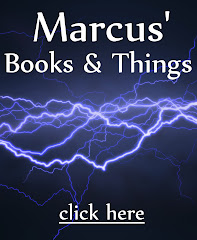
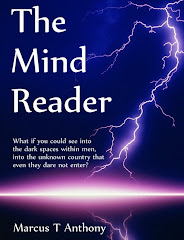
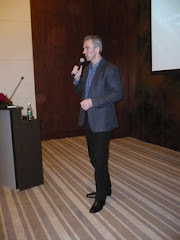

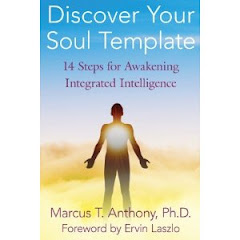
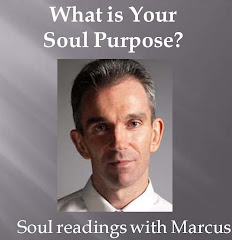
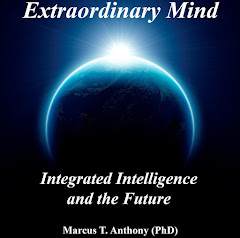





No comments:
Post a Comment